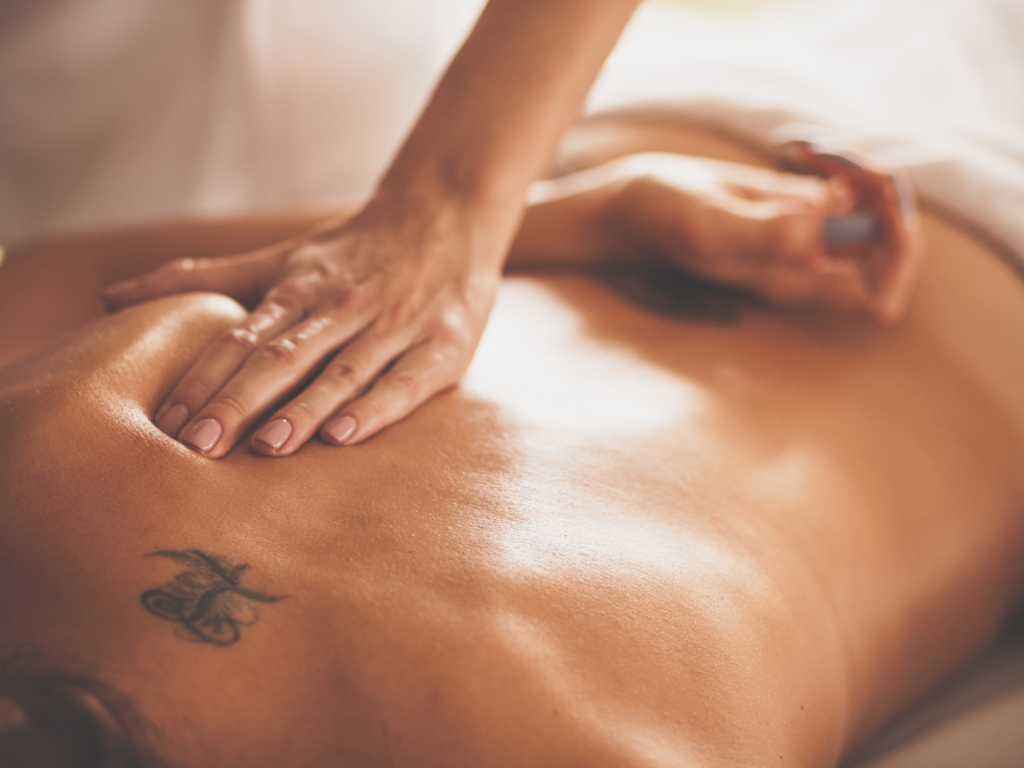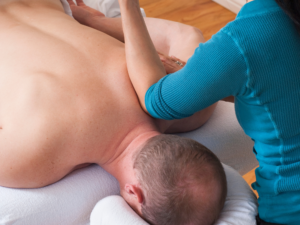
Does Deep Tissue Massage Hurt?
A deep tissue massage is ideal for relieving the tension and pain surrounding many different conditions. But is this form of massage supposed to hurt? While they are more intense, deep tissue massages should never stray outside your comfort zone. Here’s what you can expect from your appointment and what to do if it gets too painful.
What Is Deep Tissue Massage?
 A deep tissue massage is a form of massage therapy that targets deeper layers of muscles and connective tissue surrounding our muscles (called the fascia) than ordinary relaxation massage. Some of the motions are similar to those used in a classic massage, but in deep tissue massages, the movement is slower and delivers more pressure. We concentrate on areas of tension and pain in the sub-layer of muscles and the fascia.
A deep tissue massage is a form of massage therapy that targets deeper layers of muscles and connective tissue surrounding our muscles (called the fascia) than ordinary relaxation massage. Some of the motions are similar to those used in a classic massage, but in deep tissue massages, the movement is slower and delivers more pressure. We concentrate on areas of tension and pain in the sub-layer of muscles and the fascia.
Deep tissue massage is helpful for chronic aches and pains and contracted parts such as stiff neck and upper back, low back pain, leg muscle tightness, and sore shoulders. They can also help:
- Sports injuries
- Carpal tunnel
- Fibromyalgia
- Posture problems
In relieving these issues, though, is the deep tissue massage supposed to hurt?
Does Deep Tissue Massage Hurt?
While it’s likely to be a bit more uncomfortable than a classic relaxation massage, deep tissue massages shouldn’t hurt too much. They should never be excruciating or tough to manage.
At some points during the massage, most people find there can be some discomfort. You should always speak up if the pressure is too much for you. Many clients feel speaking out is easier when the massage is administered in their homes through mobile services.
Proper communication with your massage expert is essential. When the massage instigates soreness or pain outside your comfort range, let us know!
What Can You Do if Your Massage Hurts?
 While a deep tissue massage is likely to cause some discomfort, it’s necessary to know what you should do if it hurts too much. Start by evaluating the pain. Many clients describe massages as creating “good pain” where there’s an ache following the appointment. However, if you only feel pain and no relief, it may be possible that the massage therapist is using too much pressure.
While a deep tissue massage is likely to cause some discomfort, it’s necessary to know what you should do if it hurts too much. Start by evaluating the pain. Many clients describe massages as creating “good pain” where there’s an ache following the appointment. However, if you only feel pain and no relief, it may be possible that the massage therapist is using too much pressure.
You can also ask the massage expert to use less pressure. While pressure is necessary to work out muscle tension, too much can create more tension rather than relieve it. If the pain is too much, work with your massage therapist to find the pressure for you. They should listen and work with you to provide the best experience for your needs!
After the deep tissue massage, some clients experience stiffness or pain. It should subside within a day or so. Drinking a lot of water after a deep tissue massage may help flush lactic acid out of the tissues. Draw a warm bath with Epsom salts – soaking in the tub is a great way to relax your muscles and calm any post-massage aches.
Undoing the knots and tension that have built up in the body can take some time. A deep tissue massage is complementary to other strategies that can improve your overall well-being! Use it as a part of an integrated program that, along with regular massages, includes exercise and work on your posture and ways of moving.
